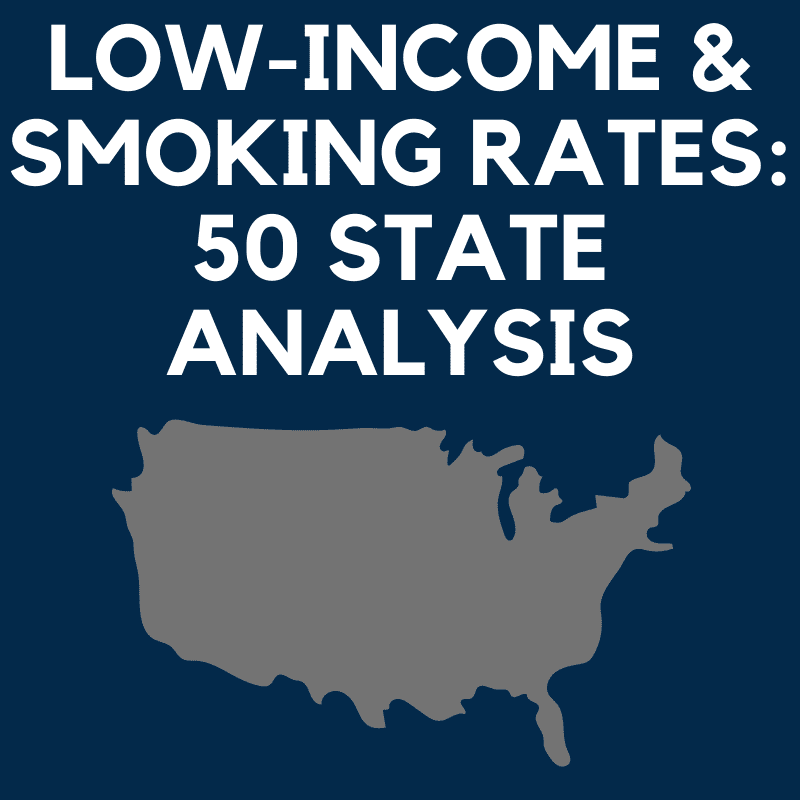
Low-Income & Smoking: 50 State Analysis
Taxpayers Protection Alliance
May 10, 2021
In 2021, many localities and states introduced proposals to create and/or increase existing excise taxes on tobacco and vapor products. As of May, 2021, legislation has been introduced in Congress, which would increase existing tobacco taxes and create a federal tax on vapor products and emerging tobacco products.
Although lawmakers argue that sin taxes help to deter behavior, the taxes disproportionately impact lower income adults.
This 50-state series of analyses (including Washington, D.C, presents data from the Centers for Disease Control and Prevention’s (CDC) Behavioral Risk Factor Surveillance System to examine the effects of cigarette taxes on smoking rates among low-income adults.
In each state analysis, smoking rates are examined among lower income persons, defined as having an income of $24,999 or less and determine the rate of change in the two years after state and federal cigarette tax increases. The studies also examine the rates of smoking among high income earners (defined as $50,000 or more) in the aftermath of tax increases.
Regarding e-cigarette use among adults, the CDC only has data available for 2016 and 2017. Data is used to examine the income levels among current adult e-cigarette users.
Overwhelmingly, smoking rates do not significantly decline, if at all, among lower income persons in the two years after cigarette tax increases.
Policymakers should take note of this data when proposing increasing sin taxes. Overwhelmingly, lower income persons are unfairly burdened by such increases, and the taxes are ineffective at greatly reducing smoking rates among that population.
